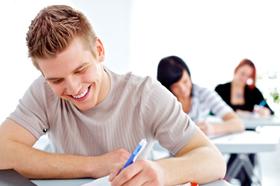While many community colleges across the country are bursting at the seams with their increasing enrollment numbers, California schools appear to be seeing the opposite trend. The largest community college system in the U.S. is currently experiencing a 20-year low in enrollment, leaving many scratching their heads as to the cause of the decline. As the system continues to struggle to lure students, many wonder if the higher cost, fewer classes, or poor track record is leaving these schools lacking for students.
The Student Shut-Out
According to a report at KQED, around 600,000 community college students have been shut out of the state’s system in recent years. Budget cuts that have led to fewer course selections have contributed to the student shut-out. In addition, KQED reports on recent findings in a report by the Public Policy Institute of California, which showed a total community college student population of 2.4 million during the 2011-2012 school year. That number marks a significant decrease in enrollment from the 2.9 million students enrolled in state community colleges during 2008-2009.
Sarah Bohn, the lead researcher for the PPIC report, told KQED the results were “troubling.” She makes note of the fact that fewer students are pursuing higher education at a time when California requires more skilled workers to beef up its high-tech industries. It is particularly concerning considering more students are graduating from California high schools than ever before, leading some researchers to wonder whether those high school graduates are attending any type of higher education.
State Budget Woes
State budget cuts have been one of the primary reasons for the massive student shut-out. The Ventura County Star reports that cutbacks in state funding have totaled more than $1.5 billion since 2007. While that amount is split between the 112 colleges in the community college system, the impact of the cuts has been significant at nearly every school. Faculty cutbacks have led to the need to limit the number of courses available, which in turn limits the number of students that can enroll.
Last fall, California passed Proposition 30, which would provide an additional $210 million to the state’s community college system. While the extra money will help stop the bleeding within the system, it is not enough to reverse the trends that have already begun. Even if community colleges are able to increase their enrollment numbers by small amounts, the total number of students will probably not be enough to bring enrollment numbers back to where they were in 2007.
This lengthy video discusses declining college enrollments.
Local Funds Not Covering Difference
While state funding has been on the decline, other means of support have not been able to make up the difference. IVN reports that sources of local funding, such as lottery proceeds, have been unable to fill the gap left by less state money as they have in the past. This makes state funding more important than ever for these schools, but unfortunately, state lawmakers can’t simply pull more money out of the proverbial magic hat so that community colleges can make ends meet.
Instead, community colleges have been forced to hike tuition costs in an effort to offset dwindling state money. IVN explains that tuition prices have risen above the means of many students who would otherwise turn to community colleges to land a well-paying job. In addition, the increased tuition has not been sufficient in closing the gap between what community colleges need and what state funding provides.
Rising Fees
California lawmakers responsible for setting fee rates at community colleges have also increased those rates in recent years. IVN reports that the current fee price at state community colleges is $46 per academic unit. That number is much higher than the $26-per-unit fee charged in 2008. When you combine that rate with increased tuition costs, it is easy to see how many students are getting priced out of the community college system.
According to the Los Angeles Times, students that are getting hardest hit by these rate increases appear to be first-time students and those returning to school after an absence of one or more semesters. The latter group encompasses professionals who have faced layoffs and have tried to return to school to get the re-training necessary to find new employment. Students faring the best are those already enrolled in college and pursuing degrees or transfers to four-year institutions.
Fewer Courses
Less money to community colleges translates into fewer courses available to students – in some cases, a significantly lower number of course offerings. The Los Angeles Times reports that the number of courses has dropped by 21 percent since the 2007-2008 school year and is now at a 15-year low. Subjects that have been hardest hit include dance, music, education, and business.
The Ventura County Star explains that fewer course selections mean students often can’t get the classes they need to complete their degree program. Some get frustrated and drop out of the system. Others linger on wait lists for extended periods of time in hopes they will finally land a spot in the coveted and much-needed class. Class sizes have also increased, making it more challenging for students to get the help they need if they face challenges in a particular course.
This video offers another look at declining college enrollments.
All of these factors add up to a statewide community college system that is hurting students and a state that is lacking the skilled workers it needs to fully staff its high-tech workforce. Until California invests more in higher education, this disturbing trend appears to continue.
Questions? Contact us on Facebook. @communitycollegereview














